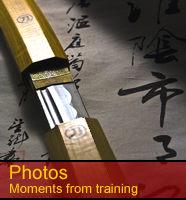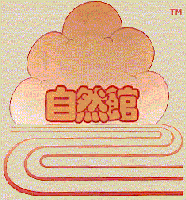A Primer on Koto Ryu Koppojutsu
Koto Ryu Koppojutsu, perhaps more than any other martial tradition within the Jinenkan, expresses power. Within our organization, it is the source of many foundational kamae and striking techniques which teach students to generate power with the whole body. The very name Koto Ryu, meaning "Knock Down Tiger school", embodies this idea. Koppojutsu is frequently written as "bone-breaking technique", further adding to this impression. However, I believe that this interpretation partly obscures this school. In fact, Koto Ryu contains subtleties which, when properly learned, reveal why this school is so fundamental. I am not aware of any dedicated text written by its headmasters which describes these. Therefore, based on my training with Manaka Sensei and my analysis of the characteristics, history, and scrolls of Koto Ryu, I composed this subjective primer hoping to help fill the gap. Any mistakes are solely my own.
The word koppo is commonly expressed as "bone-breaking". However, the representative kanji mean "bone" and "method/ law/ rule", respectively (It's worth pointing out that at least one modern dictionary translates it as "(knowing) the knack/ the trick"). Therefore, another possible interpretation is "bone-method". I base this on the observation that the kata often demonstrate strikes to set up grappling or throwing techniques from which it is very hard to take proper ukemi: for example, in several Shoden-level kata (for example, Koyoku, O-Gyaku) the strikes have the effect of stretching the opponent out, and often bowing back the spinal column. These are positions where the opponent's skeletal structure is over-extended, their balance is compromised, and their ability to resist and protect themselves reduced. To accomplish these strikes, precise kyusho, or weak points, are targeted, sometimes with the thumbs or fingers; therefore, the strikes themselves do not damage the skeleton, but rather manipulate it into a position of weakness.
Manaka Sensei said Koto Ryu is a type of dakentaijutsu, the category of martial arts in which striking techniques predominate, as opposed to the jutaijutsu category, which emphasizes grappling techniques. However, Koto Ryu certainly contains throws, joint locks and so forth. Sensei said the difference was that dakentaijutsu schools relied a little less on timing and technical set-up of their techniques; if your set-up was not quite correct, the application of more strength was often enough to allow you to finish the technique.
Within the Jinenkan, the accepted history of Koto Ryu acknowledges Toda Sakyo Isshinsai as the founder: he received the traditions of both Gyokko-Ryu Shito-jutsu and Koto-Ryu Koppojutsu in the Tenmon period (1532-1550). Though the Shitojutsu apparently already existed, it is unclear to what level the Koppojutsu was organized, formalized, or even named. However it seems that Toda passed them to Momochi Sandayu as Gyokko-Ryu Kosshijutsu and Koto-Ryu Koppojutsu; this suggests that as he had received them as separate traditions, he saw value in keeping them distinct from each other, as opposed to amalgamating them. Through Momochi the traditions were maintained by the Iga Ryu; at the end of the Tokugawa shogunate (1870s) they reached Toda Shinryu-ken, and entered the Togakure Ryu.
A commonly-repeated story is that the Koto Ryu was brought from China via Korea by someone named Chan Busho; since Manaka Sensei has not mentioned this particular story I cannot comment on it. Another is that this school has a distinctive brand of swordsmanship which deliberately tries to look unskilled, and that it features a stance in which the sword is held overhead, parallel to the ground, in an attempt to reflect sunlight into the eyes of an opponent. Again, Manaka Sensei never indicated that there was any surviving tradition of swordsmanship in Koto Ryu.
What does survive, however, are the several categories of techniques passed down through the densho (scrolls of teachings). By examining these, we can appreciate the strategies, tactics, and curriculum of the Koto Ryu.
Before the techniques themselves are the kamae, or stances. In Koto Ryu, these are collectively called Kurai-dori, an expression meaning to “take a (defensive) position”. This implies that more is involved than your body posture alone. Manaka Sensei teaches that, as in choosing or building a fortification, you would have to consider your environment; this includes the terrain, the weather, and the adversaries’ disposition in your choice of where and how to stand. Therefore, stances are not automatically or blindly chosen; they are carefully selected to represent awareness of your surroundings, and what strategy you are adopting to accomplish a goal.
Koto Ryu does not formally have a formal catalog of basic techniques, unlike the Gyokko Ryu. Any such material may well have been lost to the mists of time. Therefore, to provide the Jinenkan with a basic training protocol, Manaka Sensei examined the Gyokko Ryu. He analyzed the movement of Koto Ryu, and using the Moto Gata ("basic forms") and Torite Kihon Gata ("hand-catching basic forms") of Gyokko Ryu as a template, he established a similar set of techniques for Koto Ryu. These enable students to learn the basic movements, strikes, blocks and grappling techniques of the ryu-ha.
The first scroll of techniques, the Shoden-Gata, comprises 18 kata. In each, the kata begins with the opponent (Uke) attacking by grabbing or striking empty-handed. The practitioner (Tori) begins either from one of the kamae in the Kurai-dori, or from Hira no Kamae, an open, natural stance. From this starting point, the Uke’s attack is defended against, and he is then counter-attacked where an opening exists. Manaka Sensei teaches that the Shoden-Gata demonstrate many different kyusho, or weak points, and well as methods of attacking them. In addition, at this stage to it is important learn Koto Ryu’s characteristic straight-line movement. Through analyzing the kata, I observe that much of the footwork of this ryu-ha could be mapped onto the shape of a giant “X” placed on the ground. If you envision yourself at the center, and your opponent in the “upper” open portion of this X and attacking “down” into the center, the footwork is often in diagonal, straight-line movements along the arms of the X. Instead of stepping straight back against the Uke’s attack, the footwork moves Tori away on an angle. Often, the results are that Tori will either angle forward, abruptly moving to Uke’s unprotected side, or will first angle back, which leads Uke to follow; in this case, Tori often suddenly switches direction, moving to where Uke has overextended himself. This control of maai, or distance, demonstrates elementary tactical maneuvering. When I first learnt the Shoden-Gata, my sempai David Hewitt made the observation that this scroll was largely a self-defense course, and I agree with this summary.
The middle scroll of techniques, the Chuden-Gata, contains 12 forms. The express purpose of these kata are to help the student learn nimble body movements. They expand on what is taught in the previous scroll to include techniques based more on the practitioner's body turning, dropping, and especially leaping through the air. While in videos I have often seen the leaping initiated at very close range, at least sometimes this may have been done due to the limits of filming. Manaka Sensei emphasized that the goal was to leap into range very quickly from far away; he advocated training to leap at least the width of one tatami mat, and then to increase the distance until you could leap the length of one mat. This would not only apply forwards, but in every direction. Again, David Hewitt observed that once you had learned the first scroll for self-defense, the middle scroll was about conditioning.
The Okuden-Gata scroll is made up of 12 forms. In many schools of classical Japanese martial arts, it would be the final level of teachings, reserved for students who were fully initiated into the traditions of the ryu-ha, including that of secrecy. In Koto Ryu, it is the penultimate scroll. Manaka Sensei wrote that these forms are for practicing taihenjutsu, or the technique of body movement. These kata continue to build on what has been learned previously, but with two important considerations: in some kata the opponent now wields a kodachi, or short sword; throughout the kata, explicitly or implicitly there is the threat of multiple potential attackers. In my opinion, the actual physical techniques in this scroll would not be out of place in the previous ones; however, the focus is learning to use taihenjutsu to assess and control the environment. Just as the Kurai-dori, at the beginning of Koto Ryu, teach the practitioner to consider how and where they should stand, the Okuden-Gata extends this to considering how and where to move. It includes context that was previously missing.
The final scroll in Koto Ryu is the Hekito-Kata, which contains eight forms. The name can be translated as "barrier (against) a sword forms". All are practice for Muto-Dori (unarmed defense against a sword). Manaka Sensei has written that to accomplish these techniques, you must be capable of using your taihenjutsu (the body movements learned in the previous scrolls) to escape the opponent's weapon. In this scroll, the techniques against the sword include striking, disarming, leaping and falling. In my opinion, if you have mastered the taihenjutsu, it will act as a barrier through your control of distance and the environment.
Koto Ryu contains not only techniques, but also a progressively challenging curriculum in tactical awareness. If students rigorously apply themselves to first learn the characteristic movements, then embrace the conditioning, and throughout develop their ability to assess situations tactically, they will make great progress. If they persist, these attributes will become deeply ingrained and automatic: like the tiger, they will not hesitate, but move powerfully and instinctively, carrying with them the "knack" for fighting.
|




|
|
|